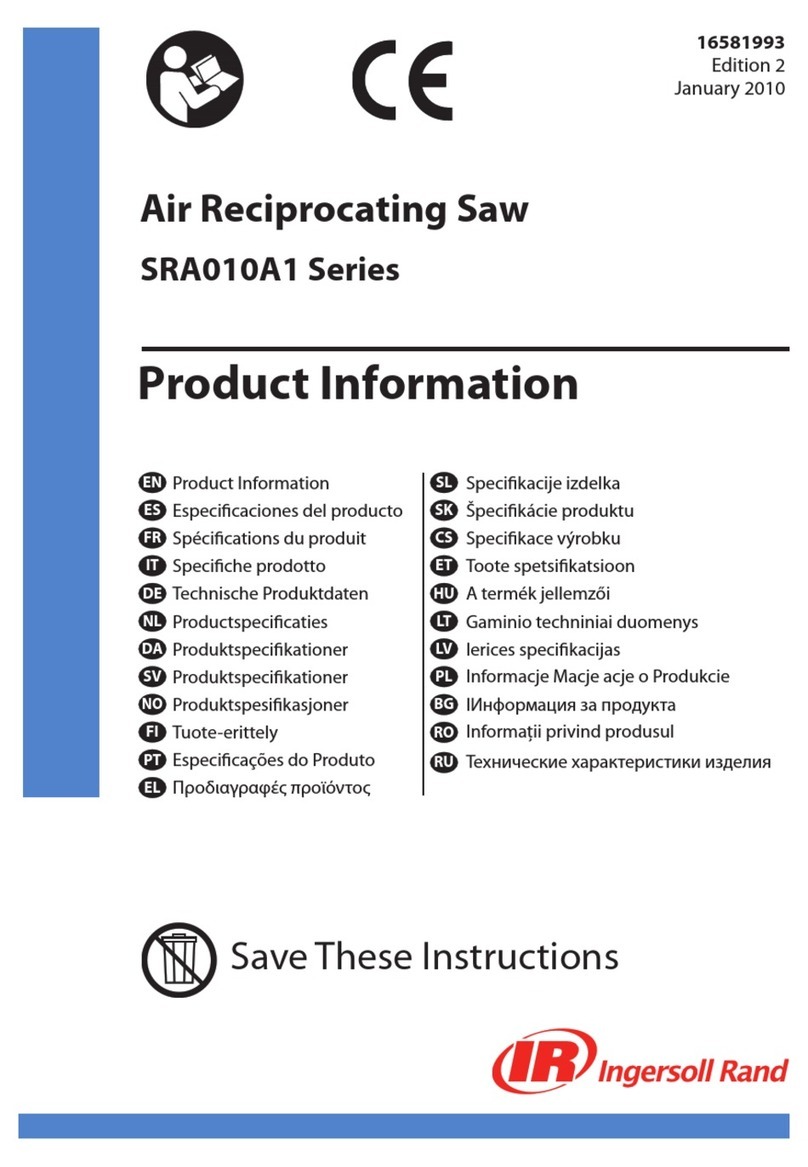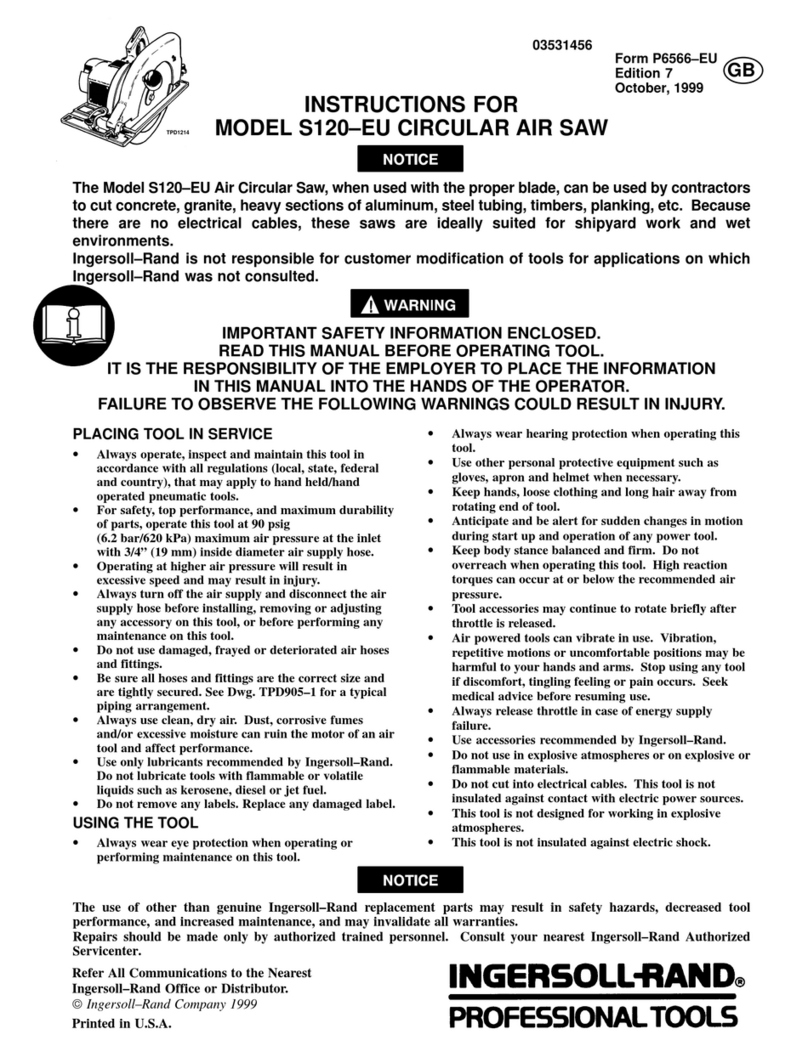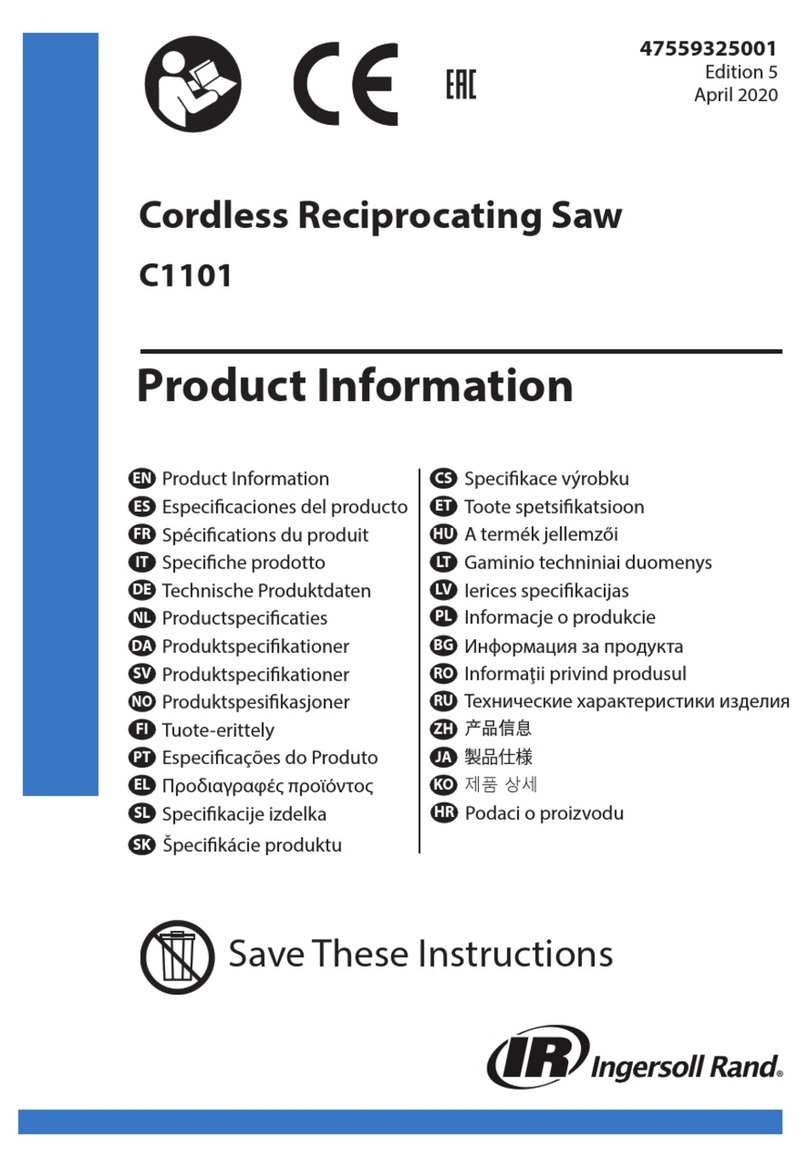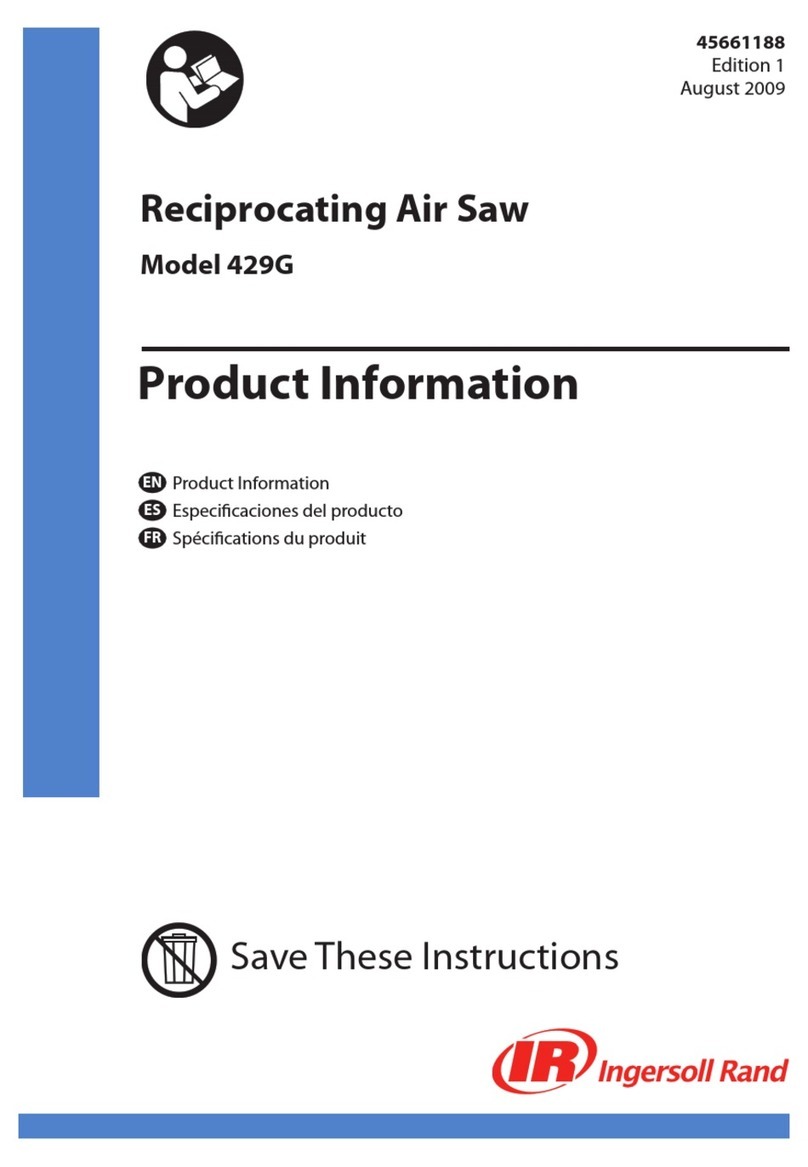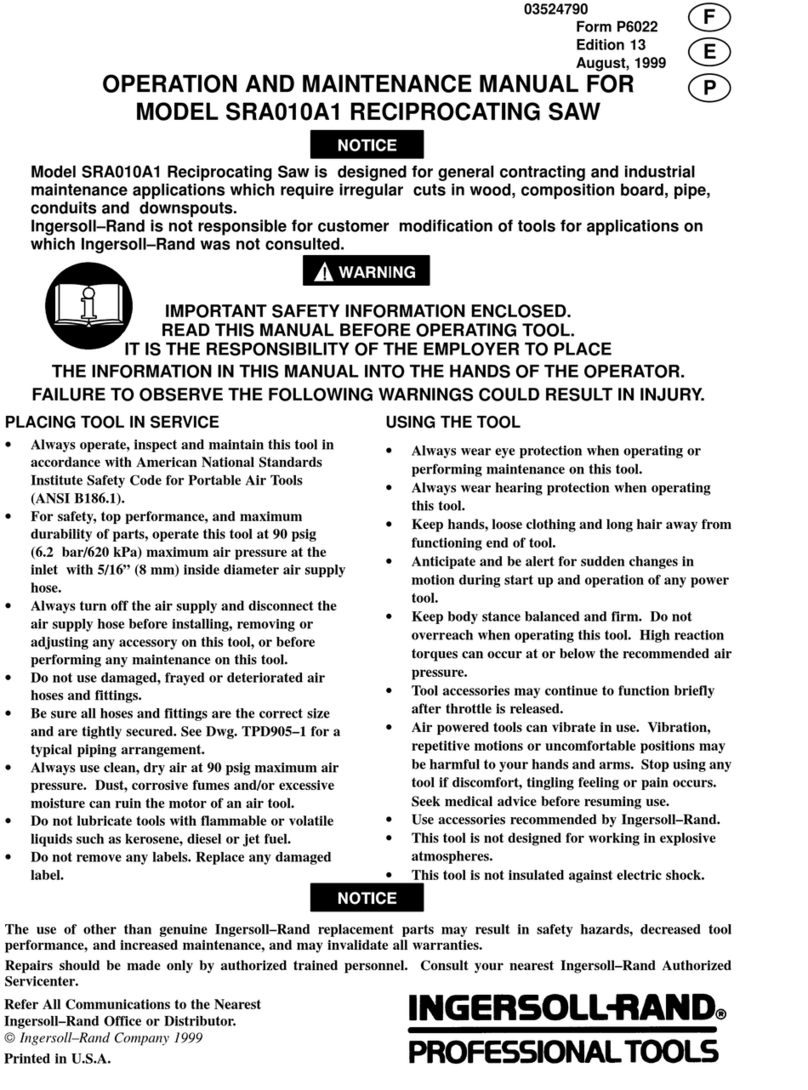
Adressez toutes vos communications au Bureau
Ingersoll–Rand ou distributeur le plus proche.
Ingersoll–Rand Company 1999
Impriméaux É.U.
03524790
Manuel P6022–EU
Révision 13
Août, 1999
MODE D’EMPLOI
DE LA SCIE ALTERNATIVE MODÈLE SRA010A1–EU
NOTE
La scie alternative Modèle SRA010A1–EU est destinée aux opérations d’entretien générales
et industrielles nécessitant des coupes irrégulières dans le bois, les planches composites,
les tuyauteries, les gaines et les conduites.
Ingersoll–Rand ne peut être tenu responsable de la modification des outils par le client pour
les adapter àdes applications qui n’ont pas étéapprouvées par Ingersoll–Rand.
ATTENTION
D’IMPORTANTES INFORMATIONS DE SÉCURITÉSONT JOINTES.
LIRE CE MANUEL AVANT D’UTILISER L’OUTIL.
L’EMPLOYEUR EST TENU DE COMMUNIQUER LES INFORMATIONS
DE CE MANUEL AUX EMPLOYÉS UTILISANT CET OUTIL.
LE NON RESPECT DES AVERTISSEMENTS SUIVANTS PEUT CAUSER DES BLESSURES.
MISE EN SERVICE DE L’OUTIL
•Cet outil doit toujours être exploité, inspectéet
entretenu conformément àtoutes les
réglementations (locales, départementales, fédérales
et nationales), applicables aux outils pneumatiques
tenus/commandés àla main.
•Pour la sécurité, les performances optimales et la
durabilitémaximale des pièces, cet outil doit être
connectéàune alimentation d’air compriméde 6,2
bar (620 kPa) maximum àl’entrée, avec un flexible
de 8 mm de diamètre intérieur.
•Couper toujours l’alimentation d’air compriméet
débrancher le flexible d’alimentation avant
d’installer, déposer ou ajuster tout accessoire sur
cet outil, ou d’entreprendre une opération
d’entretien quelconque sur l’outil.
•Ne pas utiliser des flexibles ou des raccords
endommagés, effilochés ou détériorés.
•S’assurer que tous les flexibles et les raccords sont
correctement dimensionnés et bien serrés. Voir Plan
TPD905–1 pour un exemple type d’agencement des
tuyauteries.
•Utiliser toujours de l’air sec et propre àune
pression maximum de 6,2 bar. La poussière, les
fumées corrosives et/ou une humiditéexcessive
peuvent endommager le moteur d’un outil
pneumatique.
•Ne jamais lubrifier les outils avec des liquides
inflammables ou volatiles tels que le kérosène, le
gasoil ou le carburant d’aviation.
•Ne retirer aucune étiquette. Remplacer toute
étiquette endommagée.
UTILISATION DE L’OUTIL
•Porter toujours des lunettes de protection pendant
l’utilisation et l’entretien de cet outil.
•Porter toujours une protection acoustique pendant
l’utilisation de cet outil.
•Tenir les mains, les vêtements flous et les cheveux
longs, éloignés de l’extrémitérotative de l’outil.
•Prévoir, et ne pas oublier, que tout outil motoriséest
susceptible d’à–coups brusques lors de sa mise en
marche et pendant son utilisation.
•Garder une position équilibrée et ferme. Ne pas se
pencher trop en avant pendant l’utilisation de cet
outil. Des couples de réaction élevés peuvent se
produire à, ou en dessous, de la pression d’air
recommandée.
•Les accessoires de l’outil peuvent continuer à
fonctionner pendant un certain temps après le
relâchement de la gâchette.
•Les outils pneumatiques peuvent vibrer pendant
l’exploitation. Les vibrations, les mouvements
répétitifs et les positions inconfortables peuvent
causer des douleurs dans les mains et les bras.
N’utiliser plus d’outils en cas d’inconfort, de
picotements ou de douleurs. Consulter un médecin
avant de recommencer àutiliser l’outil.
•Utiliser les accessoires recommandés par
Ingersoll-Rand.
•Cet outil n’est pas conçu pour fonctionner dans des
atmosphères explosives.
•Cet outil n’est pas isolécontre les chocs électriques.
NOTE
L’utilisation de rechanges autres que les pièces d’origine Ingersoll–Rand peut causer des risques d’insécurité, réduire les
performances de l’outil et augmenter l’entretien, et peut annuler toutes les garanties.
Les réparations ne doivent être effectuées que par des réparateurs qualifiés autorisés. Consultez votre Centre de Service
Ingersoll–Rand le plus proche.
F
TPD1451
